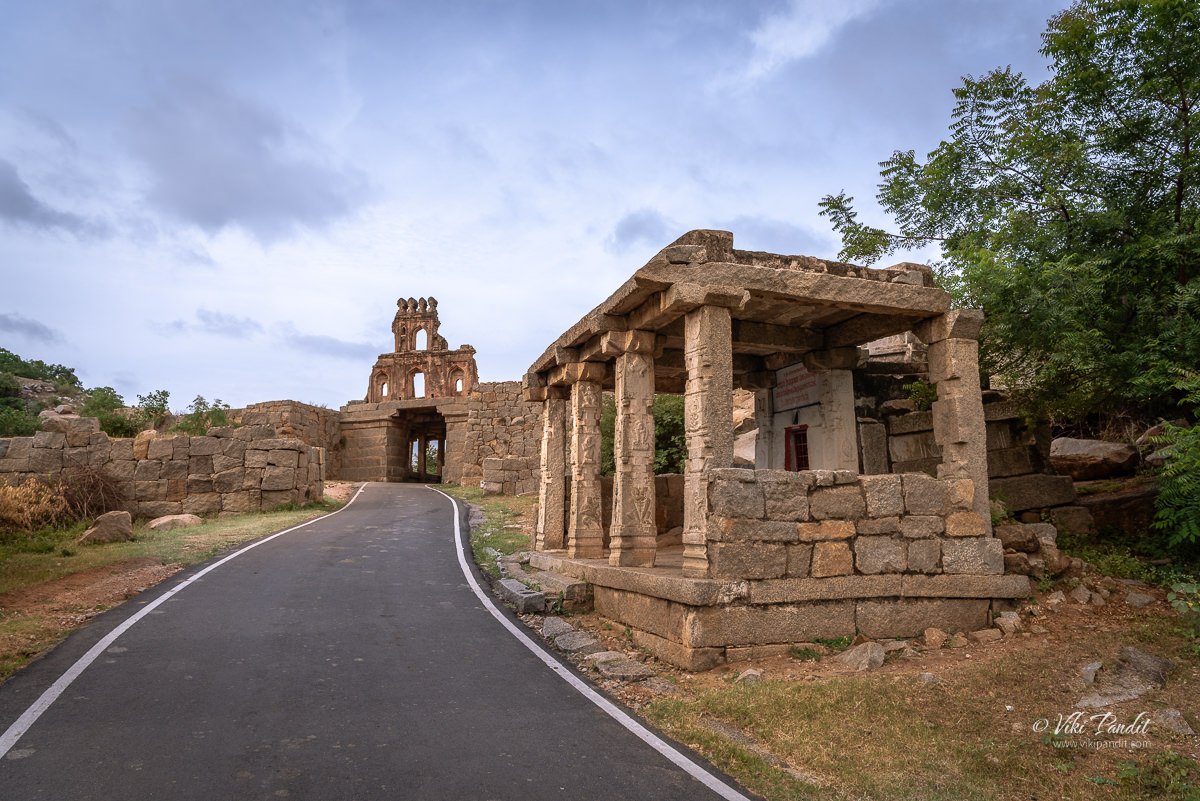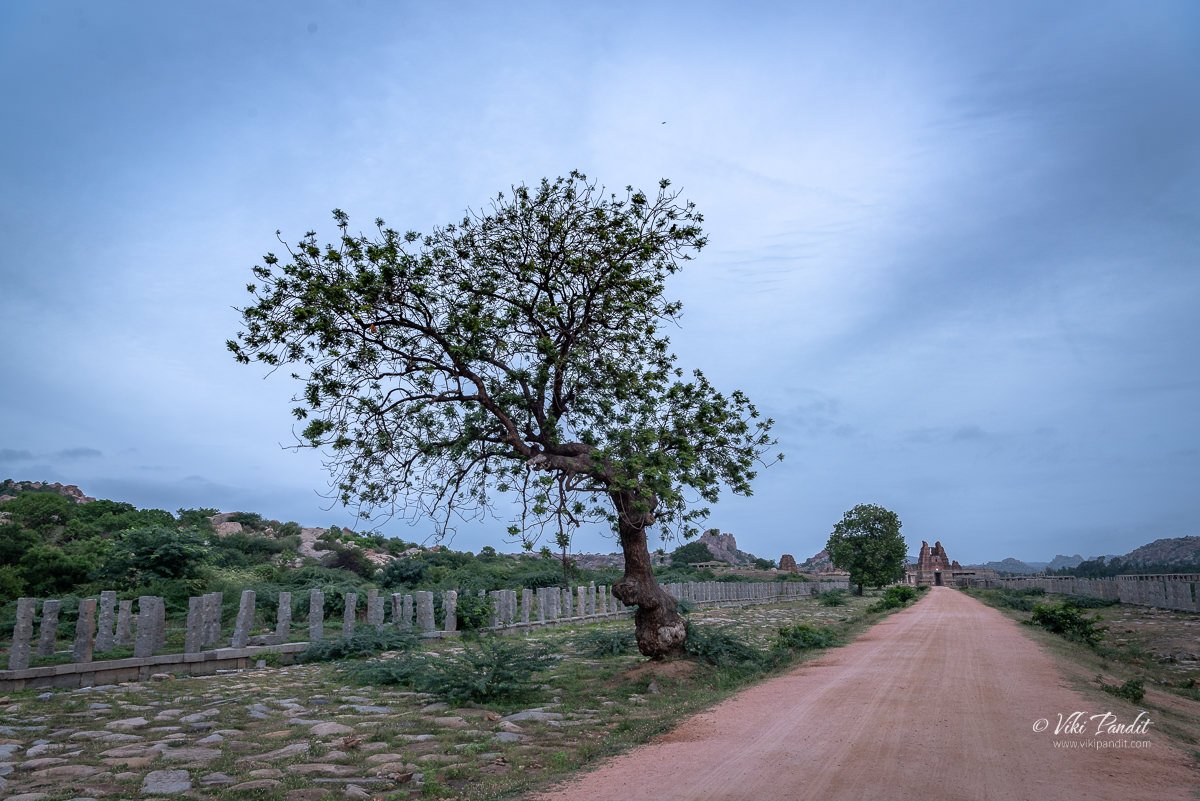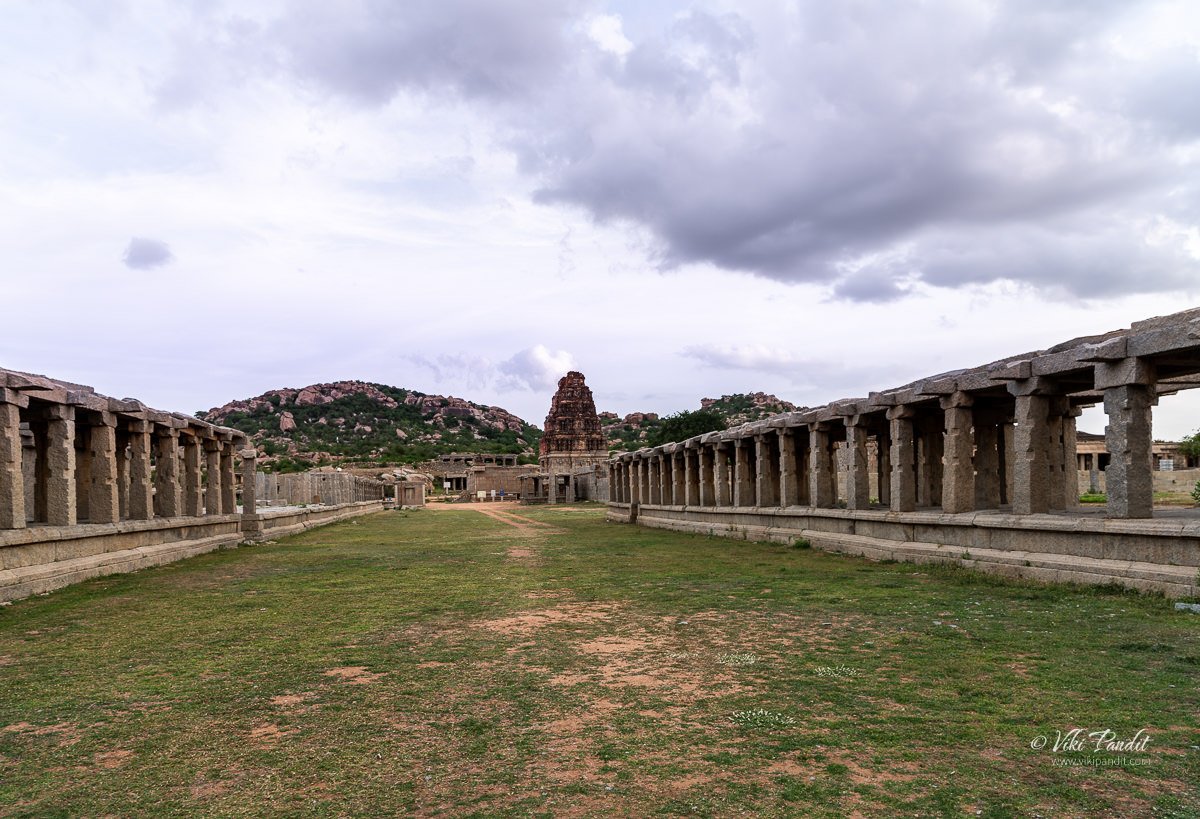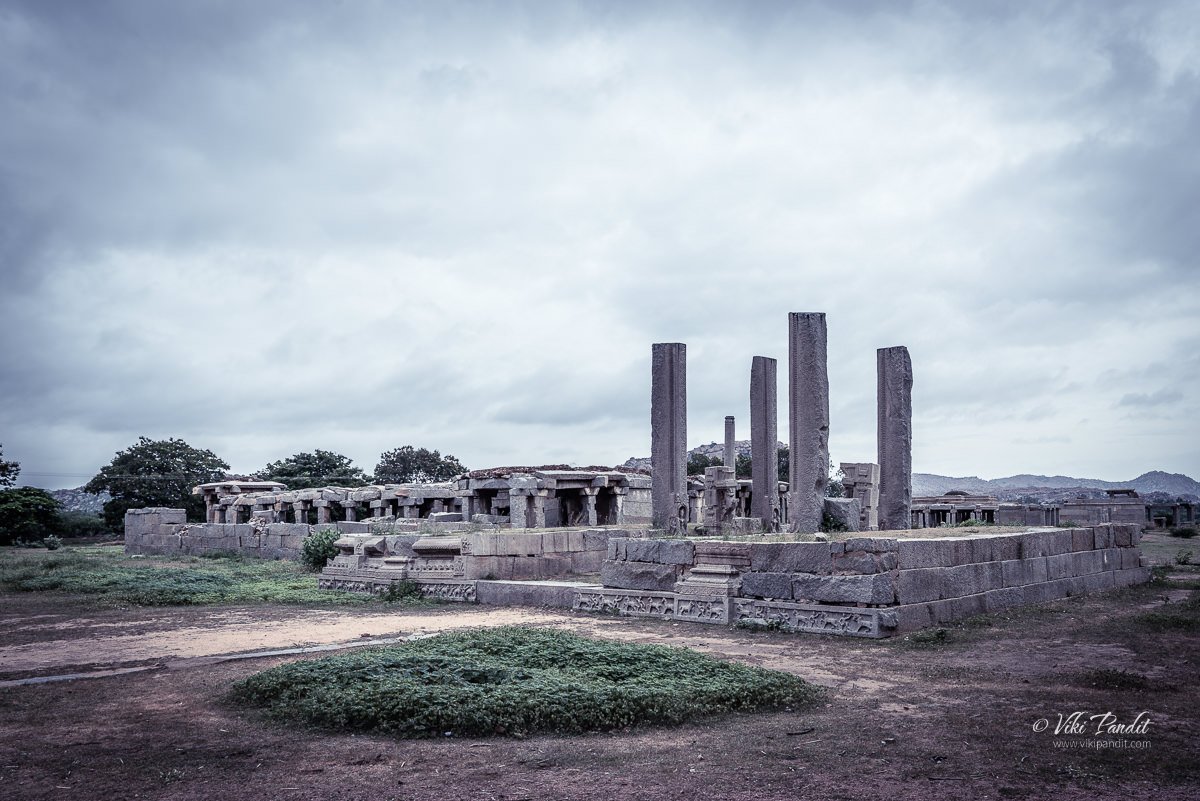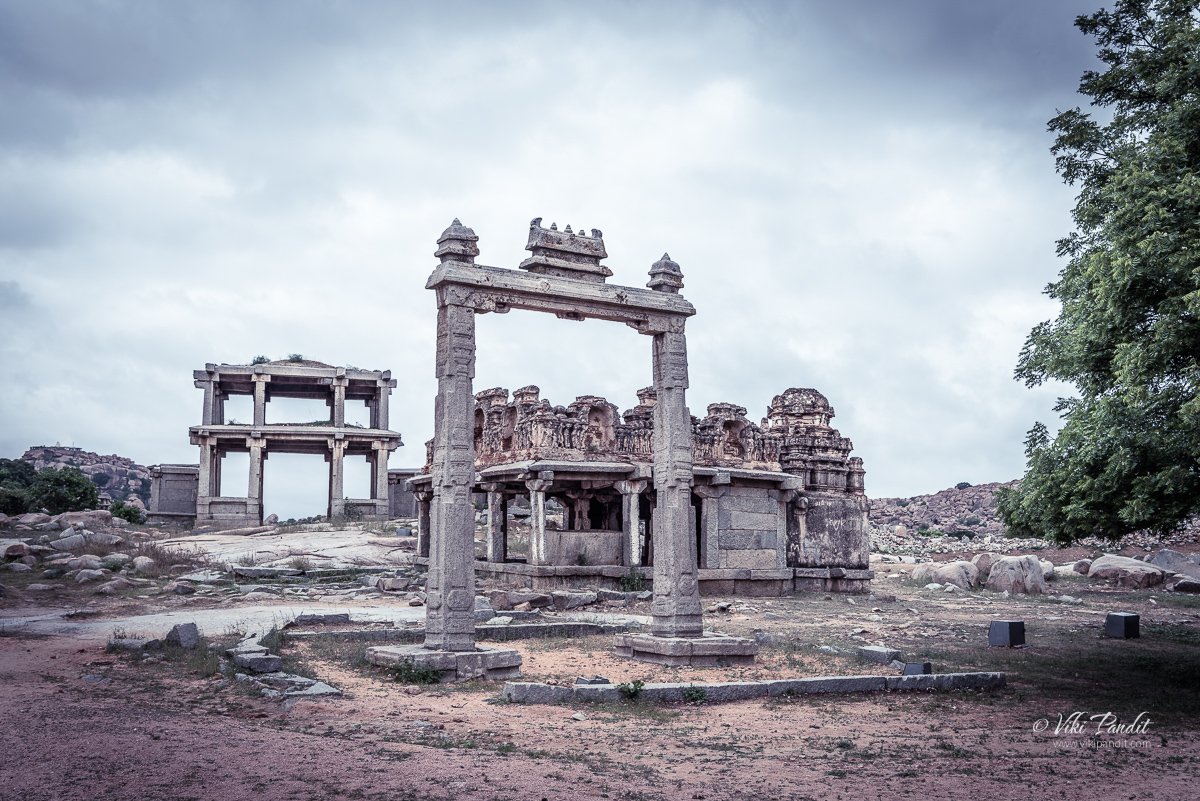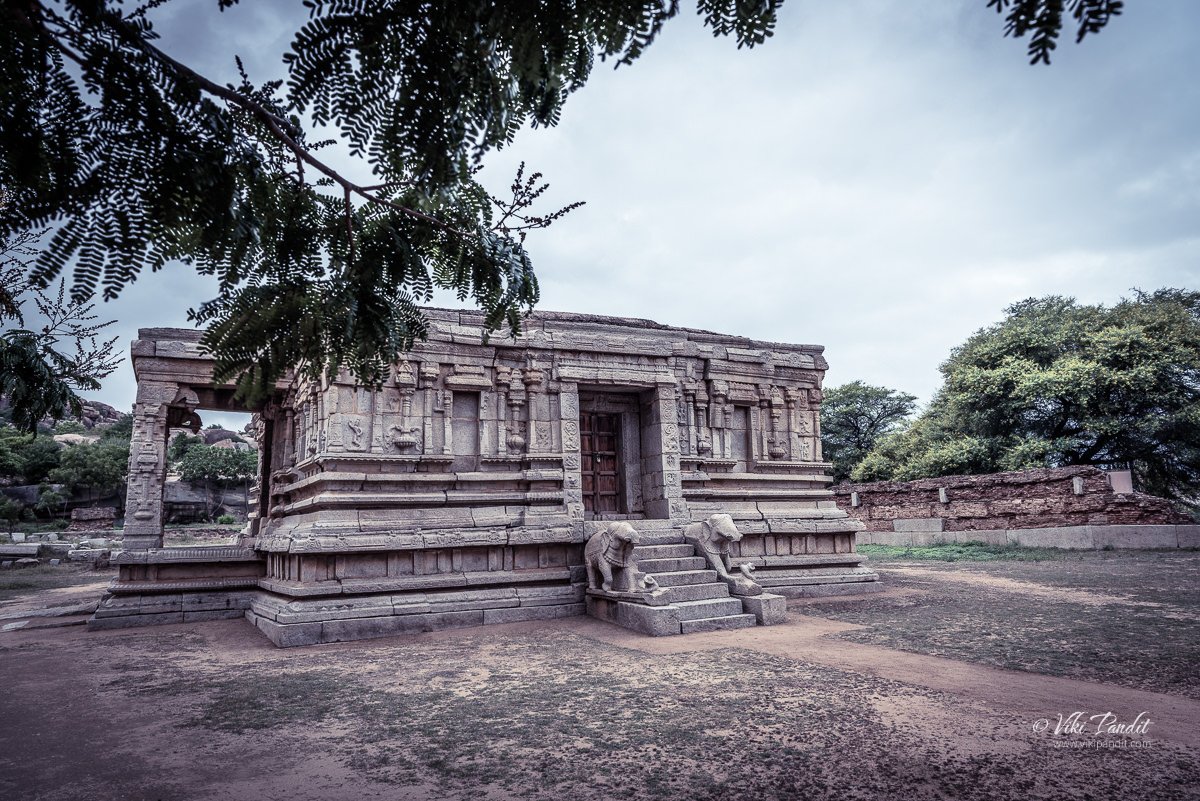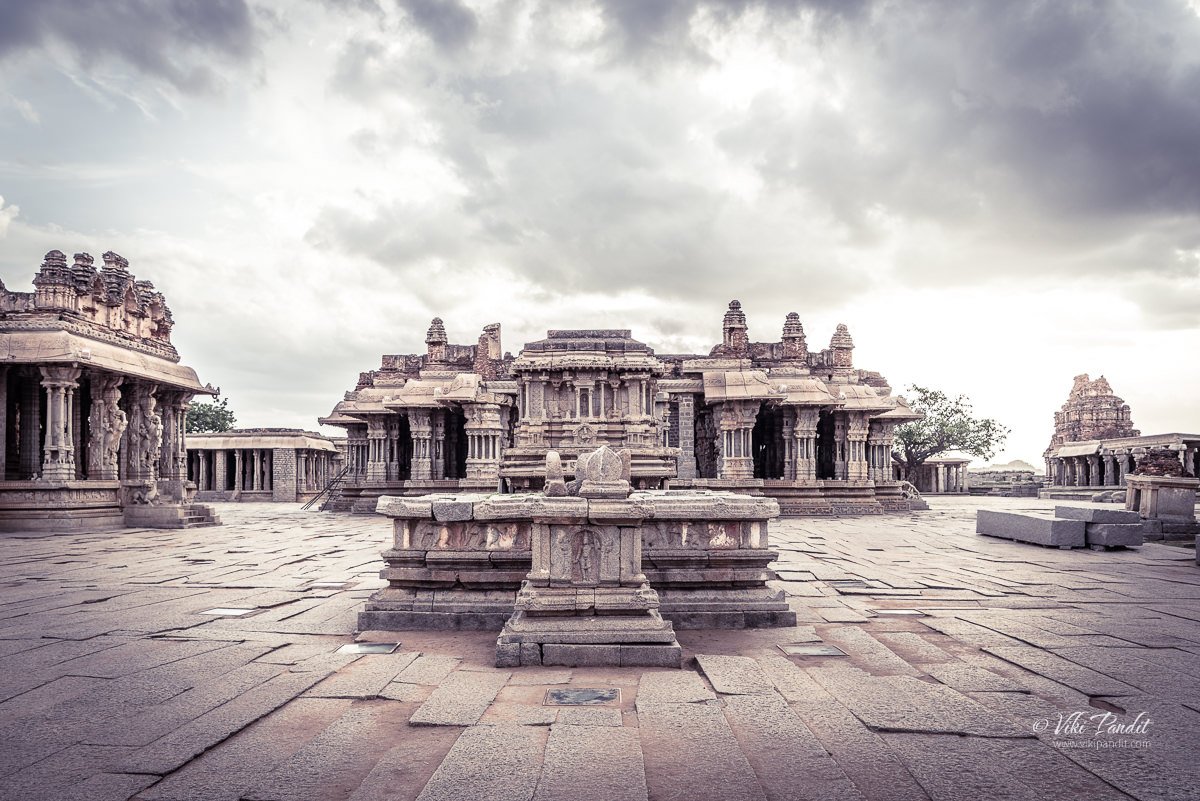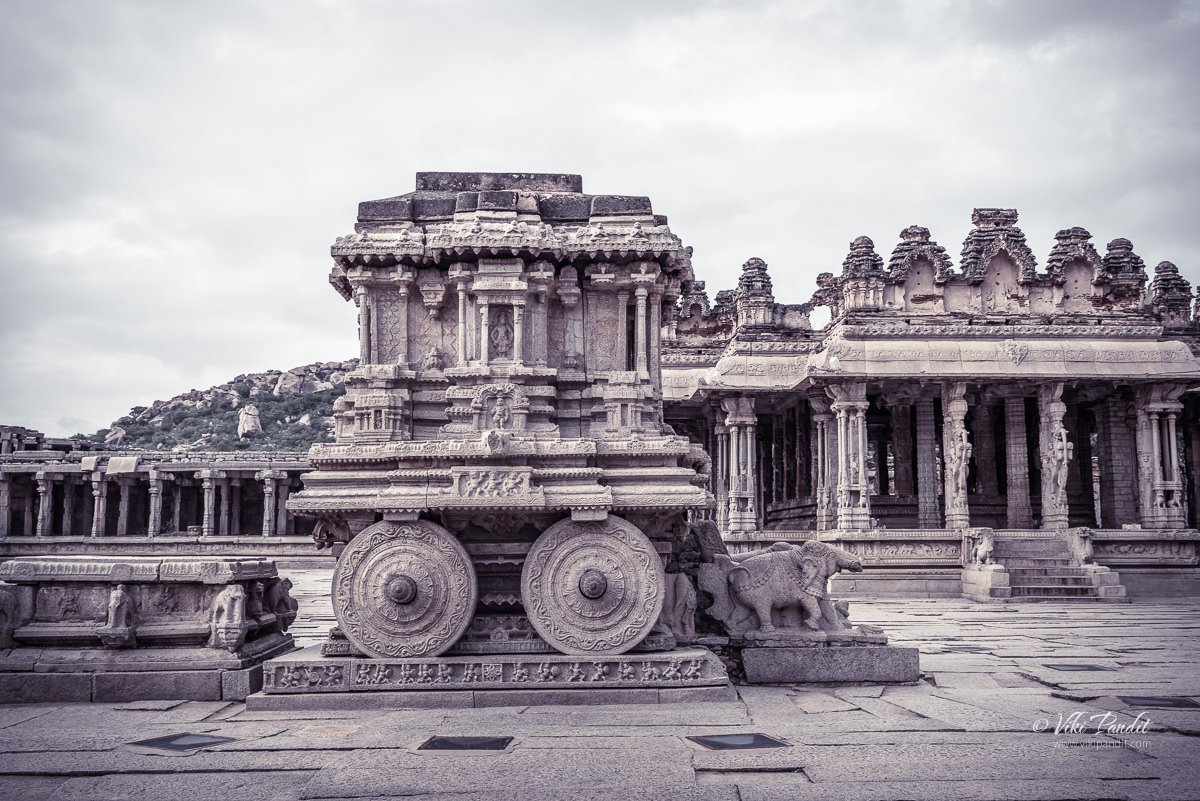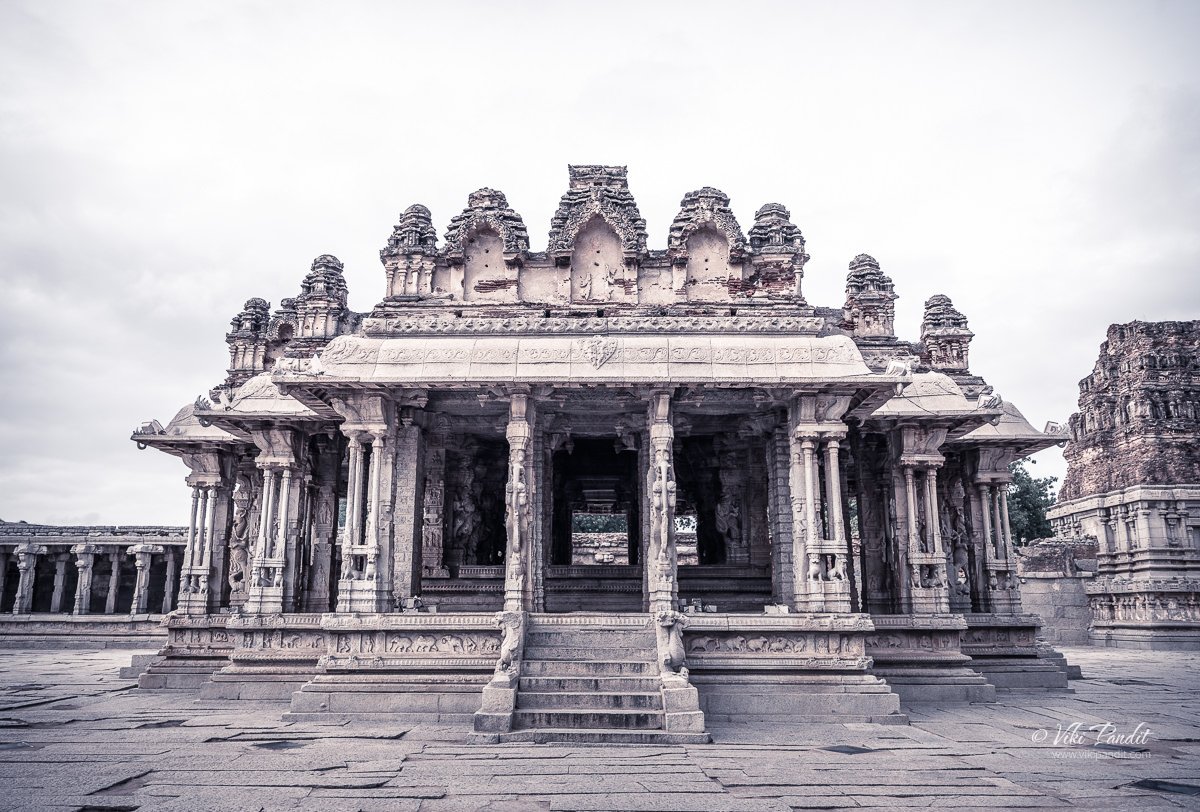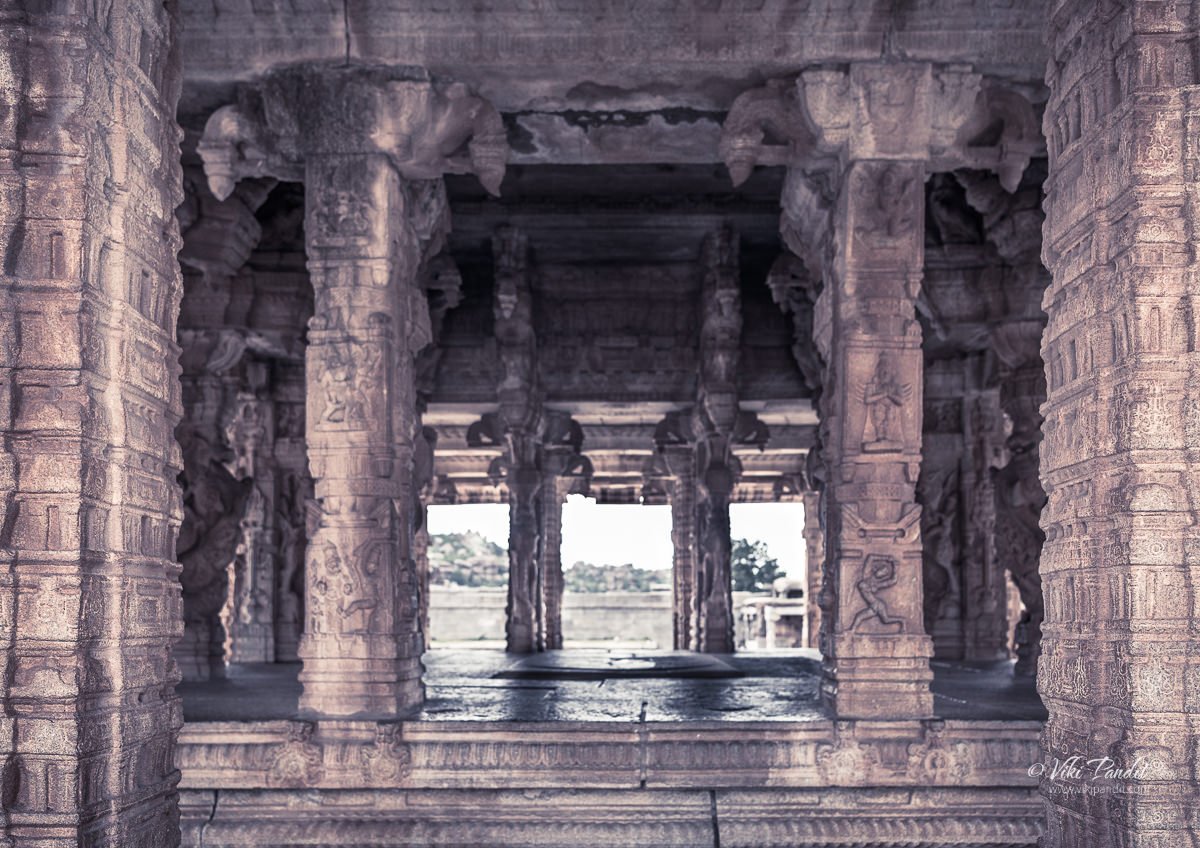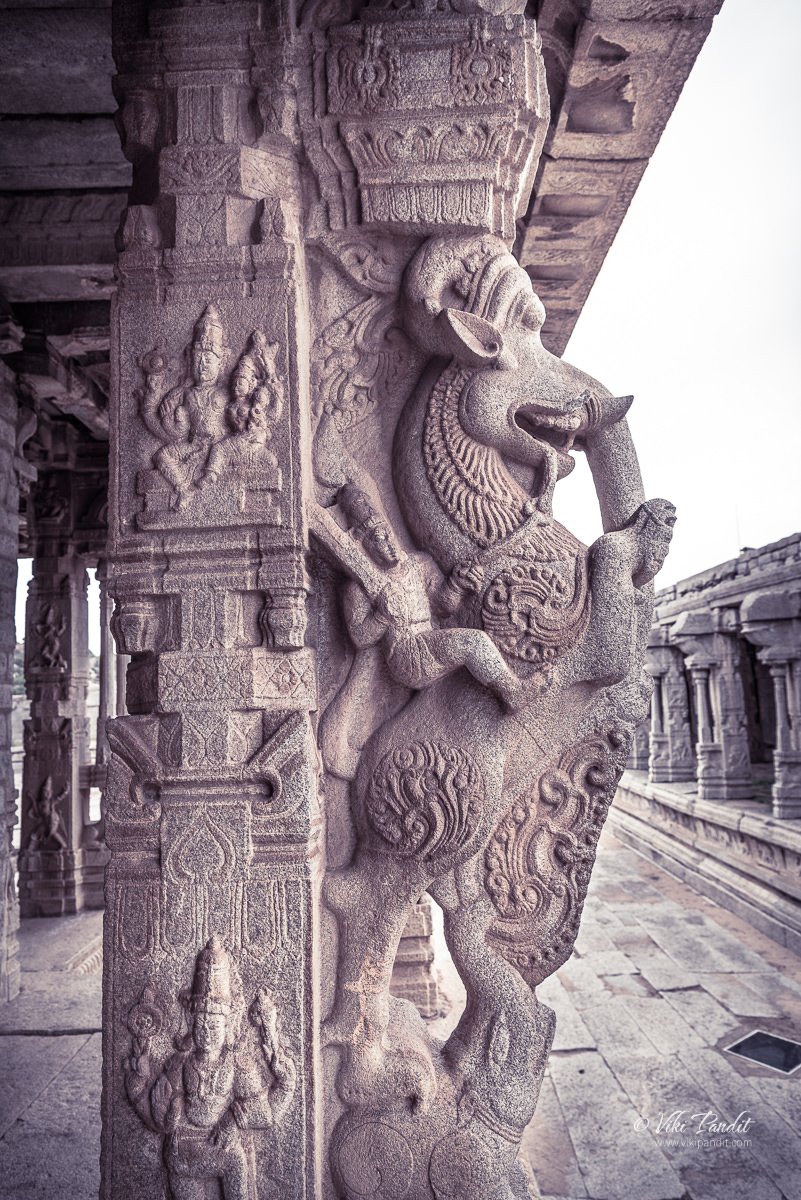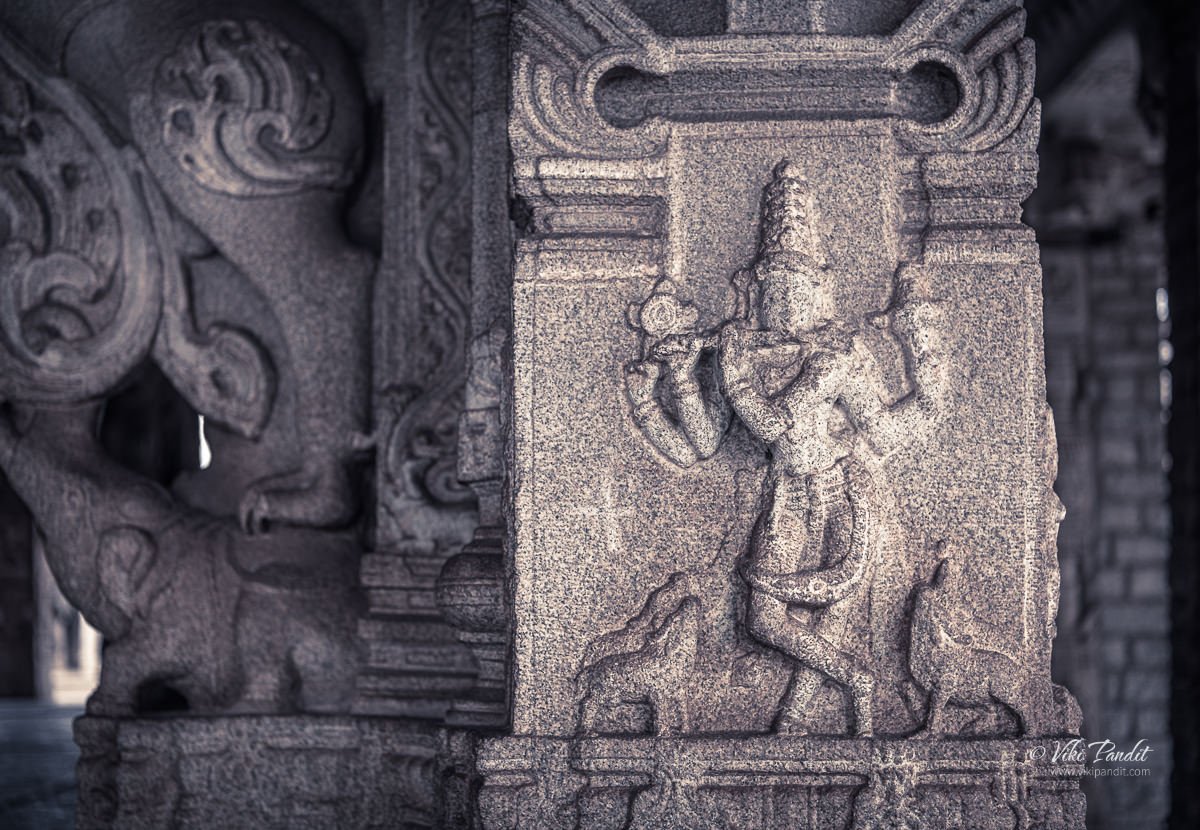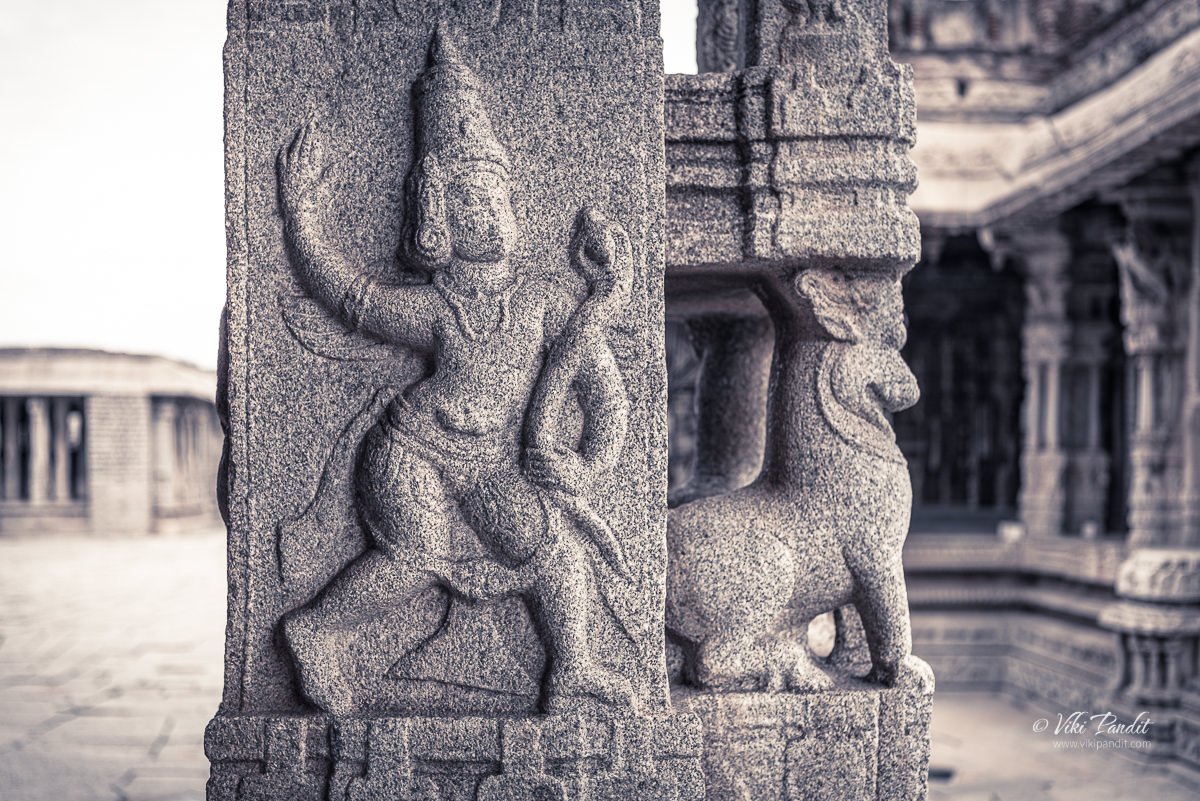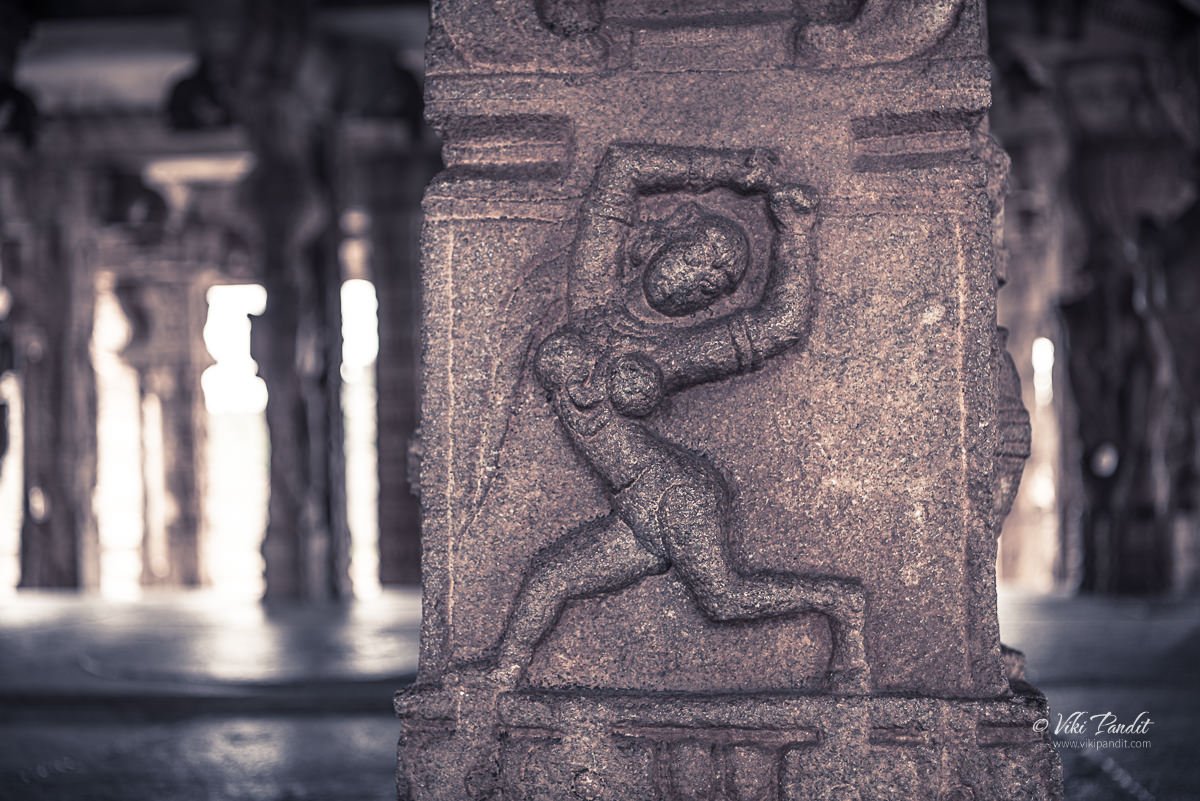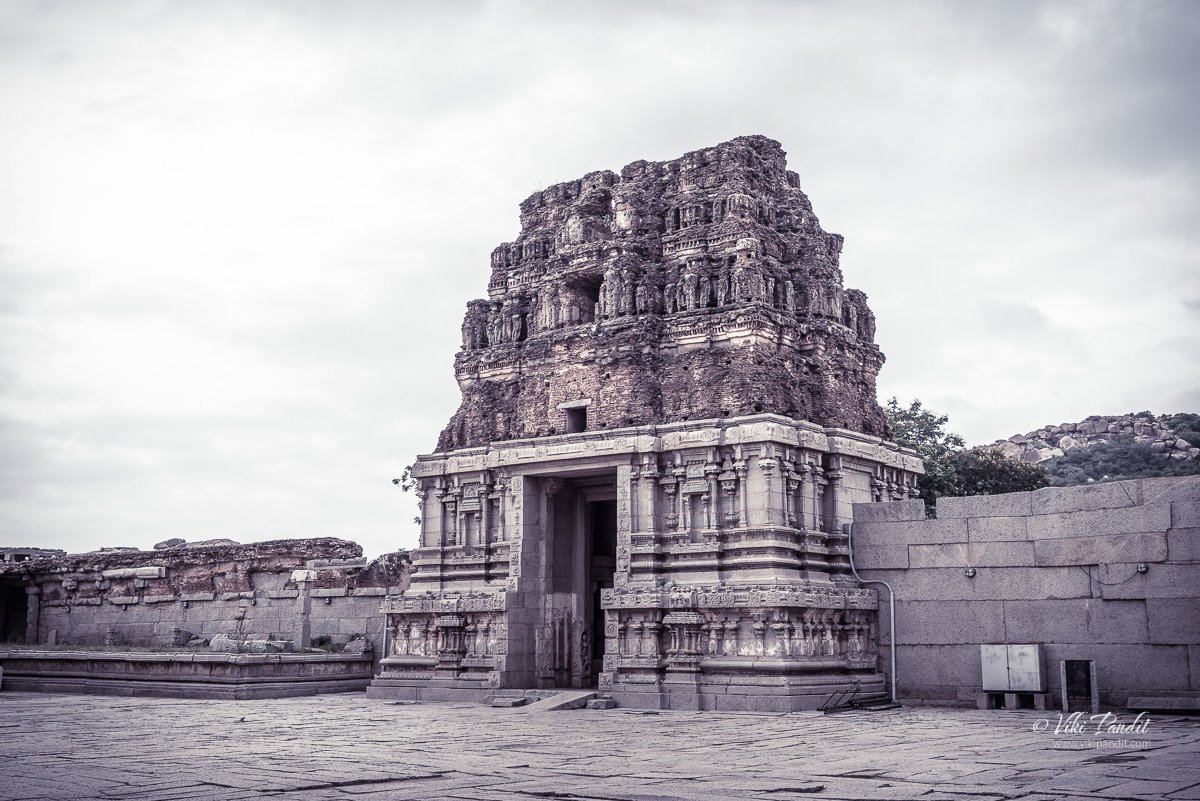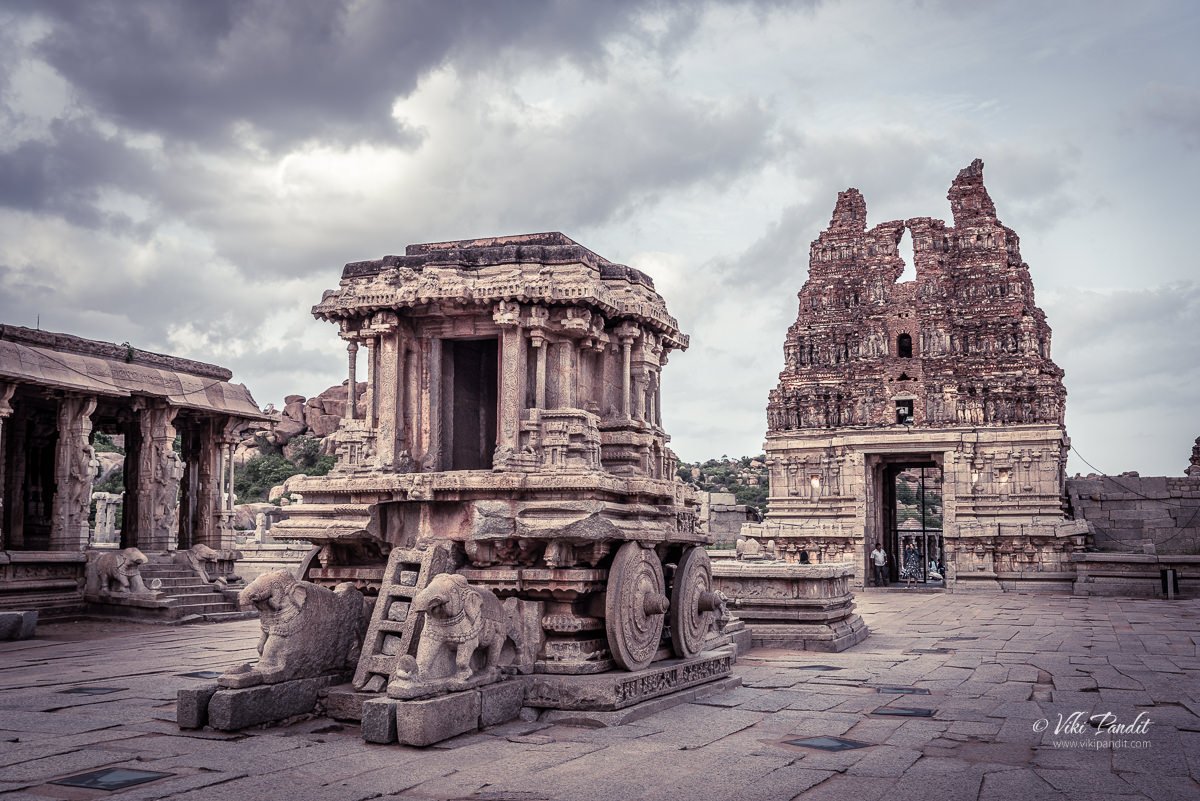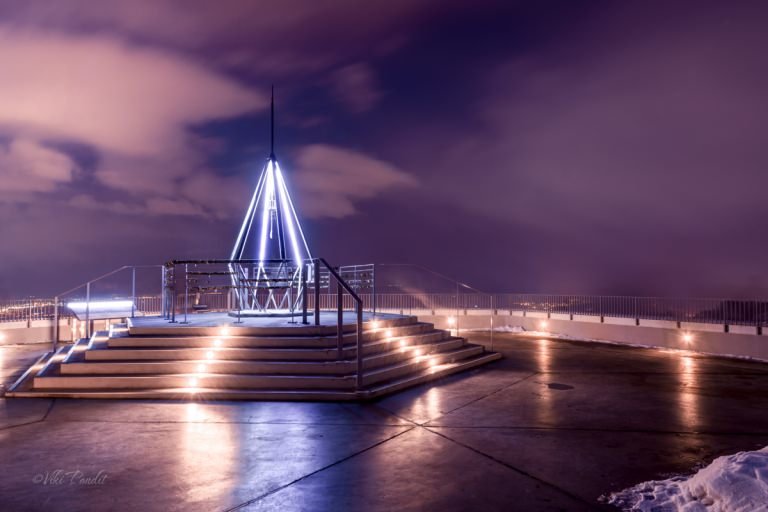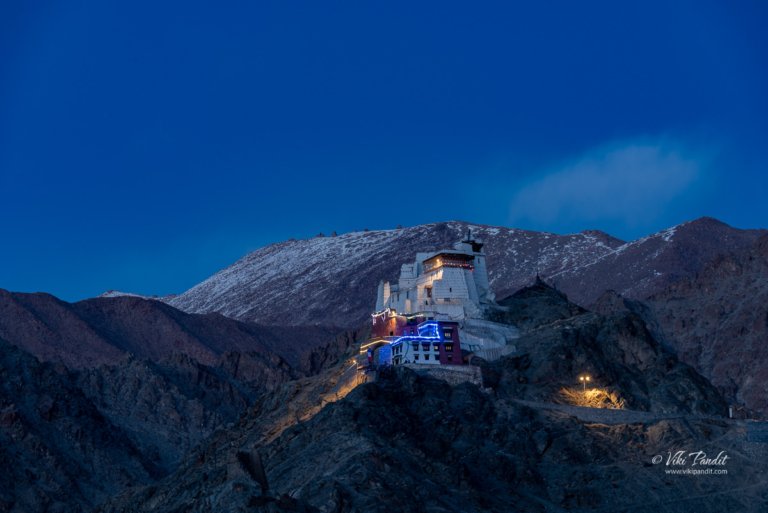While in Hampi, it is discourteous not to visit the Vijay Vittala Temple. This was my third visit to the UNESCO world heritage temple grounds and I was not sure what to capture. I have gone over the temple grounds pillar by pillar with my camera.
Anyways I left for the Temple early at dawn. This time I drove from Bangalore, so I had my car available to me at all times during the visit. It makes life a hell lot convenient having your own ride in a place like Hampi which spreads over acres of land.
I had booked my lodgings at Clark’s Inn, which is a pretty good deal considering the other available options. The small hotel also provided free parking facilities.
Now there are two routes to Vijay Vittala Temple from the nearby town. You can either park your car near the allotted parking space near Virupaksha Temple and take a 15 minute walk along the Tungabhadra. This is the scenic route and you will pass many other points of interest along the way. The other route is a bit desolate but takes you right to the parking space of Vittala Temple from where buggy rides are available up to the temple.
The Sun had just risen as I set on the road. The heavy clouds though made the skies quite murky. The first structure I came across was the Talarigatta Gate. This gate is the entrance to the lost city of Hampi. It stands alone, with no surrounding structures. During its heyday, there would be queues to get into the city.
After parking my Brezza, I made my way towards the Temple on foot. From the temple it takes about 10 minutes on foot to reach the temple grounds. Buggy rides are available from the Parking lot, but not this early in the morning. On either side of the mud road, you can find various other small temples and other structures in ruins.
To the North, West and east of the Vijaya Vitthala temple were rows of galleries of which only few survive now. The most impressive of these galleries were the ones facing the main gopura of the temple. The eastern Bazaar of the Chariot Street is about 40m wide and a kilometer long. The galleries served as ships, residential quarters, rest houses and camping centers for pilgrims.
The ticket counter had not opened yet, so I loitered round the complex taking some shots of the surrounding areas. The most prominently visible location is the Anjanadri Hill, across the Tungabhadra, just behind the Vittala Temple.
The marked white route goes all the way to the top where a temple lies dedicated to monkey god Hanuman. For some reason or the other, I have always somehow not been able to go to this hill.
The landscape outside the Vittala Temple is very shabby and not at all maintained. You can see rubbish and thorny bushes everywhere. This section used to be a market.
The corridors on either side of the wide road used to sell items relating to prayers at the temple. I moved towards the Shivalayam at the end of the road.
The Gopuram of the Shivalaya looked to have been abandoned midway through construction.
Inside the structure you can still see some boulders lying around that were meant to be sculpted to be a part of this temple dedicated to Shiva.
After exporing the Shivalaya, I walked back towards the Vittala Temple. The admission booth had still not opened, so I walked towards the back on the compound. On the Nothern side lies one of the smaller gates to the temple. These gates remain locked at all times.
Towards the back of the compound you can find two abandoned structures. The nearest one is an open air pavilion, which may have been left uncompleted.
The other structure is quite popular but again not very properly maintained is the King’s Balance.
From the King’s balance, I made my back towards the entrance. On the way I spotted another small temple known as the Nammalvar Temple. I am not very familiar with its main deity.
Just opposite to the Nammalvar Temple, lies the South Gate of Vittala Temple. Just like the North Gate, this gate too remains closed at all times.
Once I reached the front gate, I was glad to see the admission booth was finally opened. Tickets costs ₹30 for Indian citizens and ₹500 for foreign nationals. I do not understand why foreigners have to pay such an enormous amount, it is the Indians who do more damage to these heritage structures than foreigners, and so they should be dissuaded with higher fees to enter these magnificent works of art.
Once inside the temple grounds, I focused first on the Stone Chariot that welcomes the visitors inside the complex.
On all of my earlier visits, I have never been able to capture this beauty without hoards of selfie-takers getting in the way. The stupid thing about selfies is what does it matter if they take the photo in front of the chariot or anywhere else, their face covers 70% of the image anyways.
I took some other side snaps of the Stone Chariot. If you are a photo enthusiast, do take my advice and go in the mornings when there are almost no visitors to disturb your peace.
The Maha Mandap lies in the center of the Temple grounds. Visitors are prohibited from entering as they kept banging the pillars to hear the musical notes eminating from them. I have written in detail about the Maha Mandap in an earlier journal.
To the left of the Maha Mandap lies a flowering tree which is said to be very very old.
To the right of the Maha Mandap lies one of the two Kalyan Mandaps. These mandaps were generally reserved for marriages.
Incidentally I had also missed capturing the beautiful pillars of this mandap, so I went over each of the pillars capturing the beautiful sculptures one by one.
The outer pillars of the Kalyan Mandap have Yali scupltures.
This pillar clearly depicts Hindu God Vishnu in the avatar of Krishna playing his flute.
Below is another pillar with a carving of Hanuman
This one appears to be Lord Rama hunting the deer during his exile.
I am not really sure about this. The others above depict avatars of Vishnu. This could be the woman avatar that Vishnu took to steal away the Amrit from the Asuras.
After capturing the pillars of the Kalyan Mandap. I loitered around the premises. This is a shot of the South Gate again, but this time from the inside.
On the other side, there is a small corridor fallen into ruins.
People were now staring to come in steadily. Mani took a shot of me with the Stone Chariot.
After catching a last shot of the Stone Chariot, we were on our way back to the city.
While driving back to the hotel, I stopped at the fortified gateway known as the ‘Talarighat Gate,’ a ruined three storeyed gateway set into fortified walls. The two upper, arched sections have carved surface detail and a parapet. Two assistants are posed near the entrance and another seated in an archway above.
Identified by an inscription as the ‘hunter’s gate’, this gateway is found on the northeast road leading to Talarighat and the Vitthala temple complex. The gateway has a merloned parapet and pointed arches with rosettes in the spandrels. The walls in the foreground suggest a barbican enclosure (which no longer exists), forcing a number of turns in the approach to the gateway.
Thanks for reading.
Disclaimer: The information presented in this article is based on the time I visited the premises. Note that there might be changes in the prices of merchandise and admission fees that might have occurred after this article was published. At times the facility might also be closed for repairs or for variety of other reasons. Kindly contact the facility or facilities mentioned in this article directly before visiting.
Usage of this site indicates acceptance of my Terms and Conditions.
Credits: The historical information presented herein is gathered mostly from local guides that were re-inforced via historical writings.
